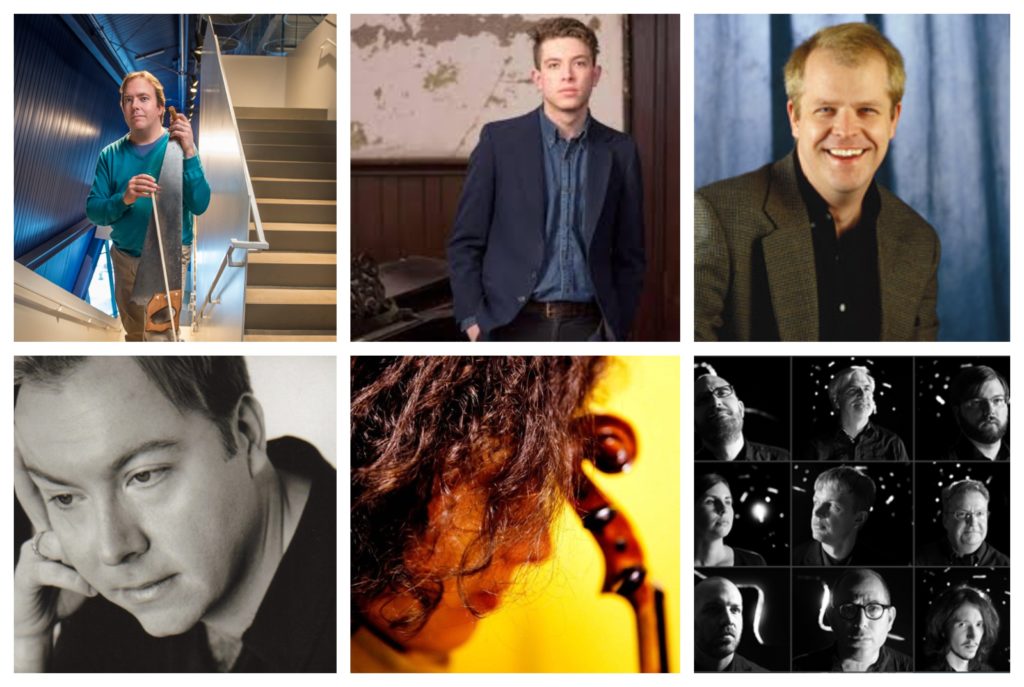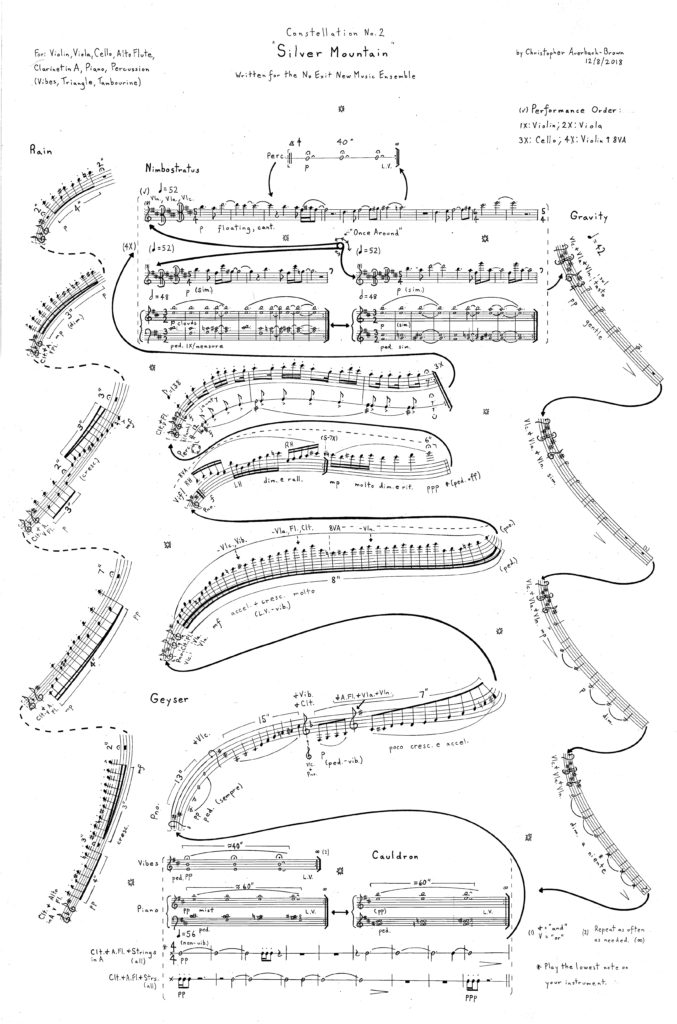by Nicholas Stevens

The performance took place at SPACES, inside Johnny Coleman’s installation Crossing the Water: Requiem for Lee Howard Dobbins, named for an enslaved child lost to illness in Oberlin over a century ago. Coleman’s vision of a better fate for young Dobbins made for a haunting and radiant setting. However, Danny Volk’s nearby The News Gallery seemed a more apt answer to the No Exit performance. It confronts visitors with rejected proposals for SPACES exhibitions, reproduced on newsprint as a reminder of the contemporary art world’s galling ratio of talent to opportunity. Walking in past images of planned yet unrealized art, listeners could reflect on the importance of No Exit’s mission.
Keith Fitch’s Ruthless Voicings opened with shining, bell-like chords from Luke Rinderknecht’s vibraphone. Melodies drifted in, but as would happen often, Gunnar Owen Hirthe’s bass clarinet disrupted the tranquil texture. Hirthe’s room-rattling digressions made for some of the most forceful moments in Fitch’s beautifully conceived chamber work. At the other end of the volume spectrum, the rattling of suspended reeds amounted to a ghostly refrain.
The elegant graphic score for Chris Auerbach-Brown’s Silver Mountain appeared in the program books, and as a poster in the room. While the visual aid may have helped some follow the piece’s varied repetitions, it could hardly account for the drama of the performance. Violinist Cara Tweed, violist James Rhodes, and cellist Nicholas Diodore read the same solo from the same part, yielding melodies of distinct pitch and character. Some memorable features appeared to arise from improvisation, rather than the score.
Sean Gabriel, playing alto flute as he would for most of the evening, stood for his solo role in Buck McDaniel’s rollicking Light Down. The carrier of the tune that inspired the composition, a grisly murder ballad called “Loving Henry,” Gabriel offered an extended stretch of murmuring melody over the disconcerting hum of a gong roll. McDaniels’ piece offered rhythmic intensity and eerie stillness alike, juxtaposing sudden violence with loving utterances.
Fresh from intermission, the ensemble made an ironclad case for Nasim Khorassani’s Sketches. Each of its seven movements corresponds with a photograph of an everyday surface. The ensemble delivered an impressive array of contrasting soundscapes in a few fleeting minutes, creating textures that pulsed, shuffled, wavered, and soared. The elements that all movements share — like the recurring bowed cymbal tone — proved still more intriguing. Proficient in the art of scoring for small ensemble, Khorassani also has a gift for the concise yet profound.
The program concluded with a work by the teacher of several composers on the program, Cleveland State University’s Greg D’Alessio. Many Doors calls back to the Jean-Paul Sartre play that lent No Exit its name, and puns on the relationship. A piece of variable movement order and duration, the work appeared as Many Doors/ No Exit this evening. Words fail to describe the seamless flow of the music from one solo passage to another, and from acoustic sound to electronics and back. Hirthe, Tweed, Diodore, and Gabriel each had a moment in the spotlight, playing over such varied material as simulated birdsong and Nine Inch Nails-style industrial beats. Even Sartre’s voice entered the fray, speaking of unresolvable contradiction.
Score courtesy of the composer
Published on ClevelandClassical.com February 20, 2019.
Click here for a printable copy of this article



